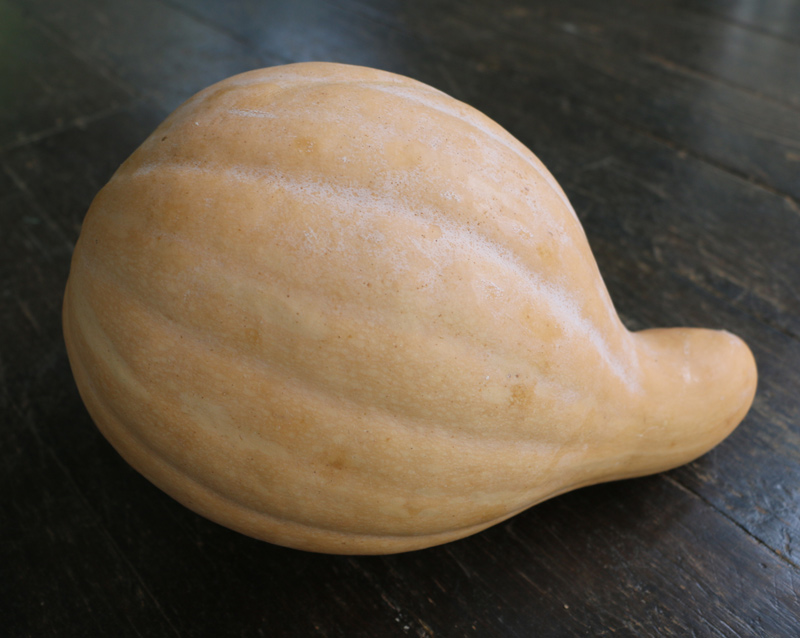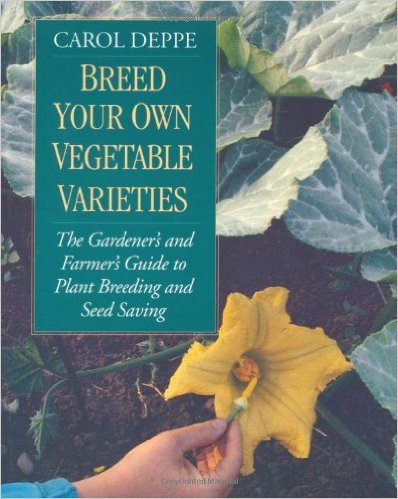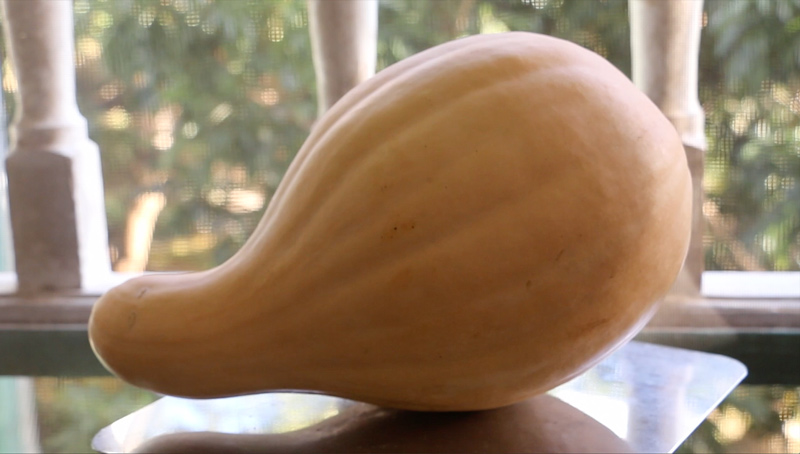Two years ago I shared my pumpkin breeding project. And did an update on my local breeding project the next year.
Though my original project was curtailed by moving overseas, I have picked up again and am doing some good work with Seminole Pumpkin genes.
Here’s one I harvested the other day:
These are good, meaty pumpkins with longer necks acquired from the calabazas I crossed them with back in Florida.
Some of them don’t have as thick a neck. This was the previous generation from half a year ago:

I prefer the thicker neck, however, as that gives us more meat without seed cavity.
My ideal pumpkin has non-stringy flesh, a good, nutty sweet flavor, long keeping ability, good vigor and a nice look. We’re getting there. I’m sure we’ll have throwbacks to the less tasty calabaza parent, but hopefully over time I’ll be able to stabilize the type to consistently produce thick-necked fruit of a good size. These are usually 9-12 lbs. About perfect.
This book has been my pumpkin-breeding inspiration:

As vegetables go, pumpkins are easy to select and breed. The trick is keeping them from crossing with each other. Isolation is key, as is hand pollination unless you’re hoping to create a land race and just let them run together for years.
I’m doing that down the hill with local varieties and will be selecting good-tasting large pumpkins with bumpy skin. They’re far enough away from where I grow my Seminole crosses that I should have problems with genetic contamination. You can see some of my hills in the video I posted on Monday:
Eventually I hope to get some of my pumpkins into the seed catalogs. Wouldn’t that be cool?

